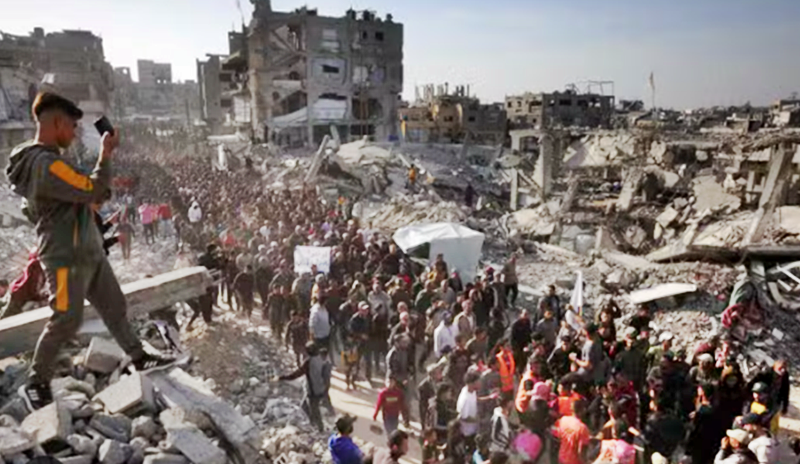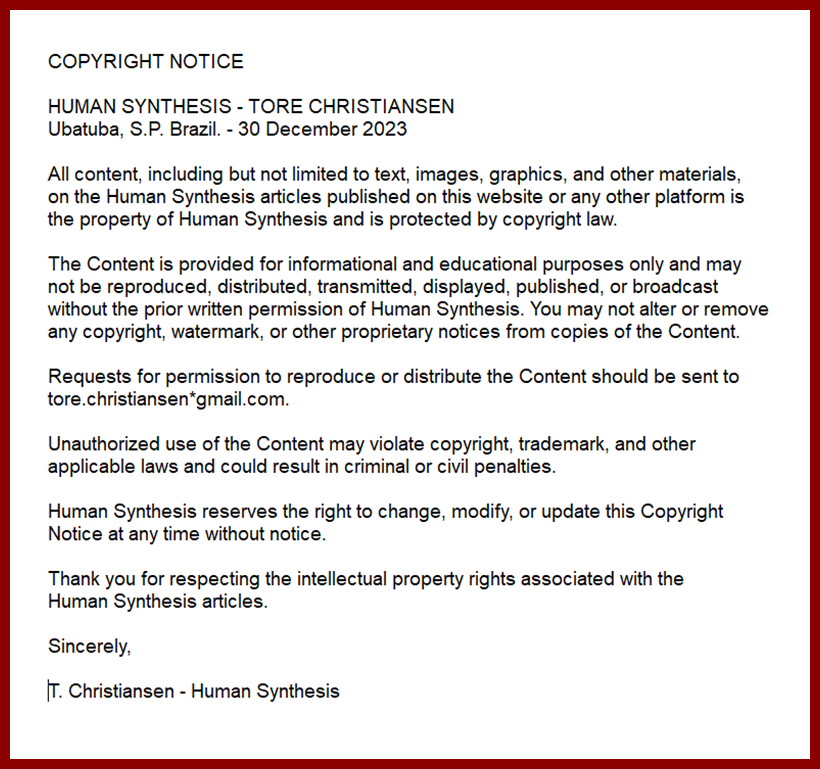Ukraine war briefing: Pope opens Vatican door to peace talks, says Meloni

By Guardian- Warren Murray - Wed 21 May 2025 01.22 BST
Zelenskyy says Putin ‘trying to buy time’ after phone call with Trump; EU lays on further sanctions and more coming up.
What we know per today.
- Pope Leo confirmed to Giorgia Meloni his willingness to host in the Vatican the next round of negotiations to try to end the war between Russia and Ukraine, the Italian prime minister said on Tuesday. “Finding in the Holy Father confirmation of the readiness to host the next talks between the parties in the Vatican, the prime minister expressed deep gratitude to Pope Leo XIV for his unceasing commitment to peace,” said a statement from Meloni. Leo, elected two weeks ago, said on 14 May that the Vatican could act as a mediator in global conflicts, without specifically mentioning Russia’s war against Ukraine.
- Separately the Italian prime minister said she had talks with other European leaders and the Ukrainian president, Volodymyr Zelenskyy, over next steps.
“It was agreed to maintain close coordination between the partners with a view to a new round of negotiations aimed at a ceasefire and a peace agreement in Ukraine.” - Zelenskyy accused Russia of “trying to buy time” to continue the war, a day after the US president, Donald Trump, discussed the war with the Russian president, Vladimir Putin. Their two-hour phone call, as Peter Beaumont and Pjotr Sauer write, failed to deliver any meaningful concessions from Moscow. The German defence minister, Boris Pistorius, also accused Vladimir Putin of “playing for time” and not really being interested in peace in Ukraine.
- In its regular assessment, the Institute for the Study of War said on Tuesday: “Russia must explicitly acknowledge the legitimacy of the Ukrainian president, government, and constitution and Ukraine’s sovereignty in order to engage in meaningful, good-faith negotiations.” Putin must also agree to a ceasefire before negotiation of a final peace settlement. The ISW said Russia was trying to expand its list of demands when it should be preparing to make concessions.
- After the European Union on Tuesday adopted its 17th round of sanctions against Russia centred on the “shadow fleet” of oil tankers, human rights violations and hybrid threats, the European Commission president, Ursula von der Leyen, said a further, 18th package was already being prepared with further “hard-hitting” measures. The UK government has also announced 100 new sanctions on Russia across Russian military, energy, financial sectors and those conducting “Putin’s information war against Ukraine”.
- The US secretary of state, Marco Rubio, said he expected Russia within days to present broad outlines for a ceasefire with Ukraine that would let the US assess whether Moscow is serious. “At some point here fairly soon – maybe in a number of days, maybe this week hopefully – the Russian side is going to present the terms,” Rubio told a Senate hearing.
- At least one civilian was killed and 13 injured in Russian attacks across Ukrainian regions over the previous day, regional authorities said on Tuesday. The ISW assessed that Ukrainian forces have recently advanced in Kursk oblast and near Borova and Toretsk; while Russian forces recently advanced in Kursk oblast and near Chasiv Yar, Toretsk, and Novopavlivka.
- Ukraine’s military said it has launched another investigation into the “Anne of Kyiv” brigade, trained in France, after a media report alleged financial misconduct among some commanders, Agence France-Presse (AFP) reported.
- The Ukrainian foreign minister, Andriy Sybiha, called on the G7 to reduce its price cap on Russian seaborne oil to $30 per barrel. The current cap is $60. Ukraine is attending G7 talks in Canada this week.
Editors -AI ChatGPT- Ukraine Comments.
As of May 21, 2025, the cumulative human toll of the war in Ukraine since the full-scale Russian invasion in February 2022 is as follows:
Ukrainian Military Deaths
- Official Ukrainian figures: President Volodymyr Zelenskyy reported in February 2025 that 45,100 Ukrainian soldiers had been killed since the full-scale invasion began in February 2022.
- Independent estimates: Analyses by Western intelligence agencies and independent trackers suggest higher numbers, estimating between 60,000 and 100,000 Ukrainian military deaths.
Foreign Fighters and Imported Helpers
Precise data on foreign nationals who have died while fighting in Ukraine is limited. Reports indicate that at least 12 Indian nationals were killed and another 16 went missing while fighting for Russia in Ukraine. Additionally, individuals from countries such as Nepal have been reported to have died or gone missing in the conflict.
Civilian Casualties
- United Nations Office of the High Commissioner for Human Rights (OHCHR): As of April 30, 2025, OHCHR had recorded 13,134 civilian deaths and 31,867 injuries in Ukraine since February 24, 2022. However, they believe the real number is higher due to limited access to certain areas.
- Other estimates: Some studies and officials suggest that the actual civilian death toll could be significantly higher, with estimates ranging up to 40,000 or more.
Total Estimated Death Toll
Combining the available data:
- Ukrainian military deaths: Approximately 45,100 (official) to potentially 60,000–100,000 (independent estimates).
- Foreign fighters and imported helpers: At least 12 confirmed deaths, with the actual number likely higher.Wikipedia
- Civilian deaths: At least 13,134 confirmed, with estimates suggesting the true number could be up to 40,000.
Therefore, the total estimated death toll ranges from approximately 58,246 (based on confirmed figures) to potentially over 140,000 when considering higher estimates.
These figures underscore the profound human cost of the ongoing conflict in Ukraine.
The origins of the current conflict in Ukraine trace back to the events of the Euromaidan protests and the Revolution of Dignity in 2013–2014. These mass demonstrations began in November 2013 in response to then-President Viktor Yanukovych's decision to suspend the signing of an association agreement with the European Union, favoring closer ties with Russia instead. The protests escalated over the following months, culminating in violent confrontations between protesters and security forces in February 2014.
Between January and February 2014, during the height of the protests, at least 108 civilian protesters and 13 police officers were killed, primarily in Kyiv's Independence Square (Maidan). The most violent day was February 20, 2014, when police snipers fired on demonstrators, resulting in numerous deaths. The slain protesters are collectively known in Ukraine as the "Heavenly Hundred" (Nebesna Sotnia) and are commemorated annually on February 20th.
Some sources suggest that the actual number of deaths may have been higher. For instance, volunteer medical personnel reported that approximately 780 people died during the protests, including individuals who went missing from hospitals and were later found deceased under unclear circumstances.
The aftermath of the Revolution of Dignity led to significant political changes in Ukraine, including the ousting of President Yanukovych, who fled to Russia. Subsequently, in March 2014, Russia annexed Crimea, and pro-Russian separatist movements emerged in Eastern Ukraine, leading to ongoing conflicts in the Donetsk and Luhansk regions. These events set the stage for the protracted conflict between Ukraine and Russia, which escalated into a full-scale invasion in February 2022.
In summary, the Maidan protests and the Revolution of Dignity were pivotal in Ukraine's recent history, marking the beginning of a series of events that have led to the current war and its associated human toll.
Editors -AI ChatGPT- Gaza Comments.
As of May 2025, the ongoing conflict between Israel and Hamas has resulted in significant casualties and destruction in Gaza.
Civilian and Child Deaths
According to the Gaza Health Ministry, over 52,000 Palestinians have been killed since the conflict began in October 2023. More than half of these fatalities are reported to be women and children . A United Nations analysis of verified deaths from November 2023 to April 2024 found that approximately 44% were children and 26% were women . These figures suggest that a significant majority of the casualties are civilians.
Hamas Fighter Deaths
Estimates of Hamas fighter casualties vary. The Israeli military claims to have killed between 15,000 and 20,000 Hamas militants . However, Hamas officials have stated that no more than 20% of their fighters have been killed, which would amount to approximately 6,000 based on pre-war estimates . These numbers are difficult to verify independently due to the complexities of the conflict and the challenges in distinguishing combatants from civilians.
Civilian-to-Combatant Casualty Ratio
The ratio of civilian to combatant deaths is a subject of debate. Israeli Defense Forces (IDF) officials have acknowledged that approximately two civilians have been killed for every Hamas fighter . Other analyses suggest that civilians constitute about 80% of the total Palestinian deaths, indicating a higher civilian-to-combatant casualty ratio .
The humanitarian situation in Gaza remains dire, with widespread destruction of infrastructure, limited access to essential services, and a significant portion of the population displaced. International organizations continue to call for increased humanitarian aid and a resolution to the conflict to prevent further loss of life.
Recent Developments in the Gaza Conflict




Destruction in Gaza
- As of May 2025, over 60% of all buildings in Gaza are reported to have been destroyed or severely damaged, including:
- 80% of homes
- All universities and many schools
- Most hospitals and clinics
- Critical infrastructure such as water treatment plants and bakeries
- The UN describes Gaza as uninhabitable, with over 1.7 million people displaced and no safe zones left.
- Aerial and ground bombardment targeted densely populated urban areas, resulting in mass civilian casualties and destruction of non-military sites.
Comparison with Ukraine
- While Ukraine has also suffered massive destruction, especially in cities like Mariupol, Bakhmut, and parts of Kharkiv and Donbas, the scale is more geographically dispersed and infrastructural damage has been less comprehensive in terms of civilian housing, schools, and medical facilities.
- As of early 2025, the percentage of total national infrastructure destroyed in Ukraine is significantly lower than that in Gaza, despite Ukraine being a much larger country.
Possible Reasons for the Disparity
- Urban density in Gaza: Gaza is one of the most densely populated places on Earth. Strikes in urban areas lead to much higher civilian and structural damage.
- Israeli military doctrine: Israel has employed a strategy of overwhelming force, aiming to eliminate Hamas's infrastructure entirely — but often with high civilian tolls.
- Blockade conditions: With Gaza already under a blockade for years, any destruction further devastates a population with limited means to recover or escape.
ACCORDNG TO THE DETAILED INFO ABOVE THERE IS A FAR GREATER NEED TO ASK THE POPE TO TURN HIS VIEW ON THE GAZA MANSLAUGHTER AND DESTRUCTON OF THEIR HOMES.
